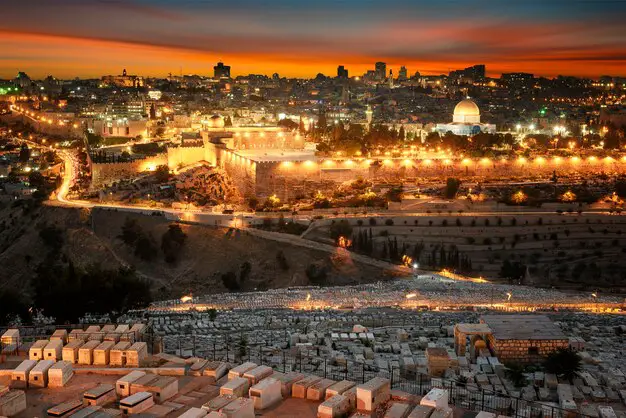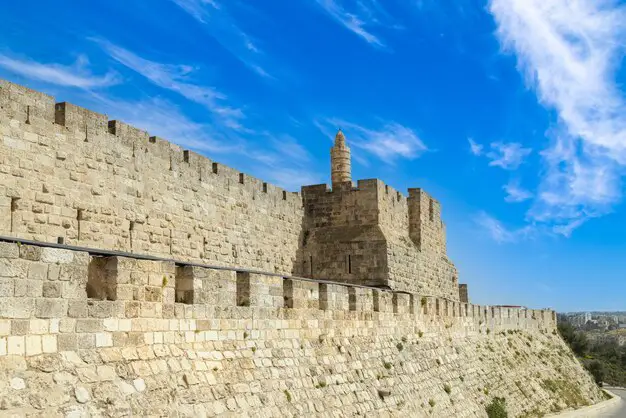Exploring the Enigmatic Heritage: The Ancient Herodian Quarter of Jerusalem
In the heart of Jerusalem lies a remarkable historical treasure that offers a fascinating glimpse into the ancient past: the Herodian Quarter. Nestled within the vibrant Old City, this archaeological site stands as a testament to the grandeur of the Herodian period and the intricate layers of Jerusalem’s rich history.

Page Contents
How was it Named?
The ancient quarter in Jerusalem that showcases remnants of the Herodian period and is often referred to as the “Herodian Quarter” or the “Wohl Archaeological Museum.” This area, discovered during archaeological excavations in the 1970s, was named after King Herod, the Roman Jewish influential king or ruler who played a significant role in the history and development of Jerusalem during the Roman period. King Herod was known for his ambitious building projects, including the reconstruction and expansion of the Second Temple in Jerusalem and the expansion of its base the Western Wall, as well as various grand architectural endeavors.
King Herod as a tyrannical ruler ordered the Massacre of the innocents during the birth of Lord Jesus on earth as written on the Gospel of Matthews. The name “Herodian Quarter” signifies the connection of this archaeological site to the time of King Herod and his influence on the city’s architecture, culture, and social life during the Second Temple period. It’s an acknowledgment of the historical importance of this area and its ties to the period characterized by Herod’s rule and the Roman Empire’s dominance in the region.
A Window into the Past
The Herodian Quarter, also known as the Wohl Archaeological Museum, presents an extraordinary journey back in time, showcasing the opulence and sophistication of the ancient city during the Second Temple period. This archaeological site, dating back over two millennia, was unearthed in the 1970s during excavations led by Israeli archaeologist Nahman Avigad.
Architectural Marvels
Visitors to the Herodian Quarter are mesmerized by its well-preserved structures and architectural marvels. The site consists of several opulent houses belonging to Jerusalem’s elite during the time of King Herod and the Roman Empire. Intricately designed courtyards, mosaic floors, frescoes, and ceremonial bathhouses provide a vivid portrayal of daily life and the social status of the residents.
The quarter’s layout and design are a testament to the advanced engineering and aesthetic sensibilities of the period. The use of ornate decorations and advanced construction techniques showcases the sophistication and wealth prevalent in ancient Jerusalem.
Cultural Significance
The Herodian Quarter serves as a cultural touchstone, offering a deeper understanding of the city’s historical and religious significance. Situated near the Western Wall, one of Judaism’s holiest sites, the Quarter provides context to the religious practices and lifestyles of Jerusalem’s inhabitants during biblical times.
Visitors can marvel at the remnants of a bygone era, connecting with the stories and legacies of the people who once walked these ancient streets. The site’s proximity to revered religious landmarks imbues it with spiritual significance for people of various faiths.
Preservation and Visitor Experience
The meticulous preservation efforts and interpretative displays at the Herodian Quarter ensure an immersive and educational experience for visitors. Guided tours, multimedia presentations, and informative exhibits offer insights into the archaeological significance and historical context of the site.
Visitors can explore the unearthed remains, wander through the ancient dwellings, and visualize life in Jerusalem centuries ago. The site’s well-curated displays and informative guides breathe life into the ancient stones, allowing visitors to appreciate the architectural splendor and cultural heritage of the Herodian Quarter.
Legacy and Future Exploration
As a living testament to Jerusalem’s multifaceted history, the Herodian Quarter continues to intrigue historians, archaeologists, and visitors alike. Ongoing research and excavation efforts uncover new layers of information, enriching our understanding of this ancient city and its inhabitants.
The site stands as a bridge between the past and the present, inviting visitors to delve into the mysteries and grandeur of a civilization long gone, yet deeply embedded in the fabric of Jerusalem’s identity.
Conclusion
The Ancient Herodian Quarter stands as a compelling archaeological site, preserving the splendor and legacy of Jerusalem’s past. Its significance transcends time, offering a captivating journey through the architectural prowess and cultural richness of the Herodian period. For those seeking to unravel the secrets of ancient Jerusalem, a visit to the Herodian Quarter is an immersive experience that leaves a lasting impression.
Significant Reads
Israel Hotels and travel guide – inisrael.com
The ESSENTIAL Guide to Israel – what to do in Israel, see, eat & enjoy! (igoogledisrael.com)







